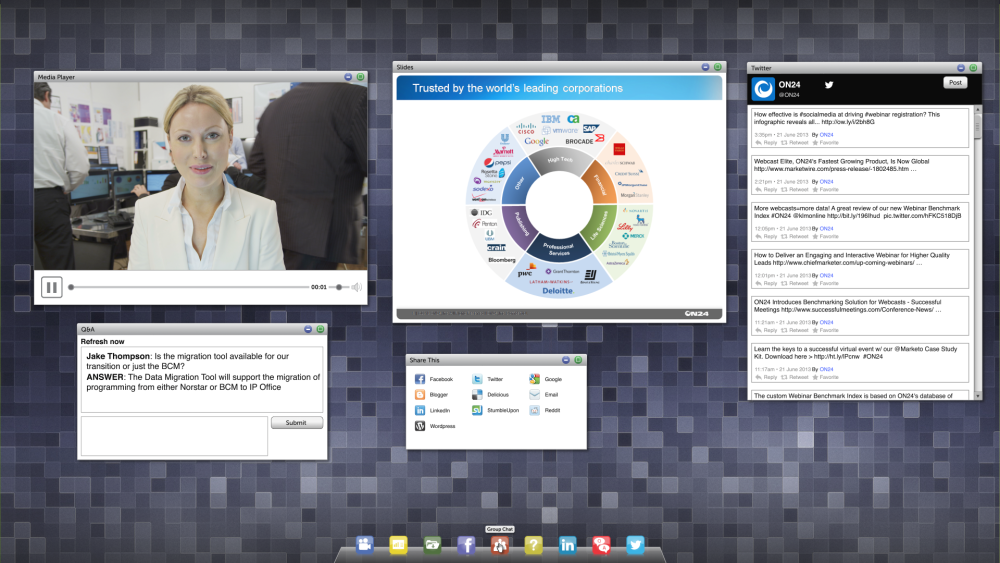On Thursday, Aug. 9., DMN and ON24 hosted “Anatomy of an Awesome Webinar,” a meta deep dive on how to take your company’s webinars to the next level.
According to Mark Bornstein, VP, marketing, ON24, webinars have come quite a long way from merely generating leads. The medium has the potential to grow and evolve as the technology landscape around us grows, Bornstein said, and can take attendees on an engaging and informative journey.
“I think pretty soon webinars are going to look like talk shows rather than the slideshows you’re used to,” Bornstein said during Thursday’s webinar.
If you’d like to watch the full webinar on demand, you can register here. For those looking for a quick overview, here are some of the key takeaways from Bornstein’s webinar.
Preparation
Bornstein recommended that webinar preparation is considered far in advance — planning, even, for the entire calendar year ahead. It’s important, he said, to have an idea of what your specific goals are before you start getting into the weeds with the details. Also at this stage, he noted, it’s important to recognize that webinars don’t need to be at the top-of-the-funnel — they can be created to address all different aspects of the buying cycle. Some suggestions he included were case study webinars (middle of the funnel) or even product demonstrations (bottom of the funnel).
So, what should your content be? It’s important not to limit your team, Bornstein said. Review your own internal content and assess how it’s performing to decide what warrants a webinar and what doesn’t. Then, once that’s decided, it becomes easier to plan the form and structure of the webinar. Who should your host be? What should the format be? Should it be live, simulive, or straight to on demand?
Execution
What’s going to make someone register for your webinar? Well, the title is a good start.
“Pick action-oriented titles,” Bornstein said. “If you want people to come to your webinars, you have to let them know that they’re going to learn something.”
One of the biggest challenges Bornstein said webinars still face is audience engagement. That’s why he stressed using polling features and Q&A functionality to personalize the experience for the audience.
Once content, topics, and basic details of the trajectory of the webinar are set, it’s promotion time. Not surprisingly, Bornstein said that branding should be consistent across all different promotional channels: email, landing pages, social media, and console design.
Follow up
After the webinar ends — you’re not done. Bornstein stressed that you should archive the live or simulive broadcast within 24 to 48 hours to make sure that you can blast your registrants with a downloadable on-demand link. That should give you enough time to edit our any erroneous errors from the live broadcast, and polish the final product. He also noted that straight to on-demand webinars can also mimic the nature of real-time engagement by way of audience planted questions — just to help keep the feel of a live and engaging event for the audience member.
Last but not least, when all of the follow-up emails have already gone out, Bornstein said that you should be leveraging content this webinar has provided you (it can help with on-demand distribution and overall awareness). When it’s time to sit down as a team and analyze the successes and failures of the webinar, it can be incredibly informative to go beyond just lead scoring. Bornstein honed in on data like the length of viewing per audience member, their likelihood to ask questions, etc. When passed along to sales, Bornstein said, this kind of data on the audience’s experience can yield more informed lead follow-ups.
Finally, he discussed ways that webinars have evolved over the years, sometimes such that they look more like ultra-personalized video broadcasts than the classic slider visual.







